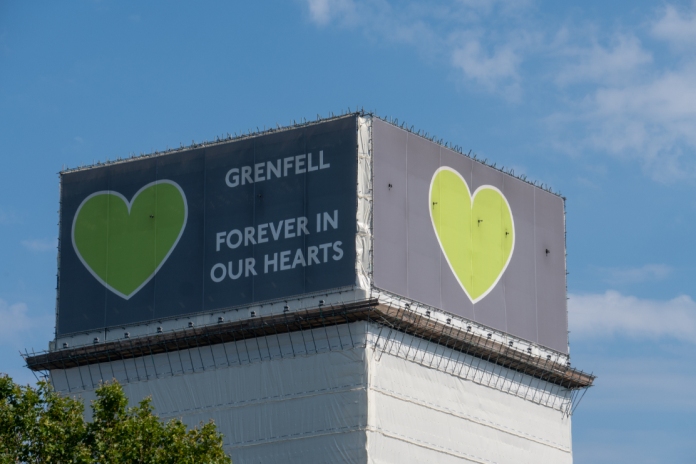
Following the first coronavirus lockdown, the Grenfell Tower Inquiry restarted in July 2020 and ran until December when a covid case among the Inquiry team meant it had to be shut down early before a 2021 restart.
During that time, the Inquiry heard evidence from multiple witnesses who worked on the project at the time, including from contractors Rydon and Harley Facades, the Kensington & Chelsea Tenant Management Organisation (TMO), building control officers, the clerks of works and the employer’s agent. Expert witnesses also appeared to give their evidence, before a second module started and the focus of the Inquiry shifted to the products used in the refurbishment of the tower.
Here are five things we learned during the course of the proceedings:
- Celotex marketing material “misleading”: Marketing material for the combustible Celotex RS5000 insulation that was used behind the rainscreen cladding on the building was “misleading” because the “overengineered” rig used in a large-scale fire test test didn’t represent illustrations of the system later used in product marketing, the Inquiry heard. But the company’s former head of marketing denied that the claims were “deliberately” misleading.
- Cladding installation “sloppy”: The project manager who worked for Grenfell Tower cladding subcontractor Harley Curtain Wall admitted that some of the firm’s workmanship was “sloppy” after being shown an example of a horizontal cavity barrier being installed in a vertical position and an intumescent strip facing the building.
- Kingspan dismissed earlier concerns about insulation’s suitability: A manager at Kingspan, which manufactured the K15 insulation used on the tower admitted dismissing concerns from Bowmer & Kirkland about K15 for use in a building above 18m as “totally unprofessional”. In an internal email, Philip Heath said: “I think Bowmer & Kirkland…are getting me confused with someone who gives a dam (sic).”
- Building control officer lacked relevant experience: The Inquiry heard how the local authority building control officer responsible for inspecting the Grenfell Tower refurbishment had no previous experience of an overcladding project on an occupied high-rise residential building. John Hoban later declared himself “heartbroken” about the disaster and accepted he made “serious failings” in his work.
- Incomplete fire safety manual: The fire safety manual for Grenfell Tower was not complete, while the health and safety file compiled for the building during refurbishment works was “not easily understandable”, according to expert witness Dr Barbara Lane.
The Inquiry will resume in January 2021.
Comments
Comments are closed.










I am interested in the window upgrade and installation. The fire seemed to escape from the flat to the cladding. Also reports of smoke getting into other flats from outside. Were the ‘old’ widows of robust Aluminium in hardwood and pretty smoke tight and the new burnable plastic with poor or wrong sealing? I am waiting for them to get to that bit!
What we have learned is that the market cannot regulate itself. I wonder if this will result in real change, or vested interests will water down any proposal to ensure that buildings are fit for purpose?